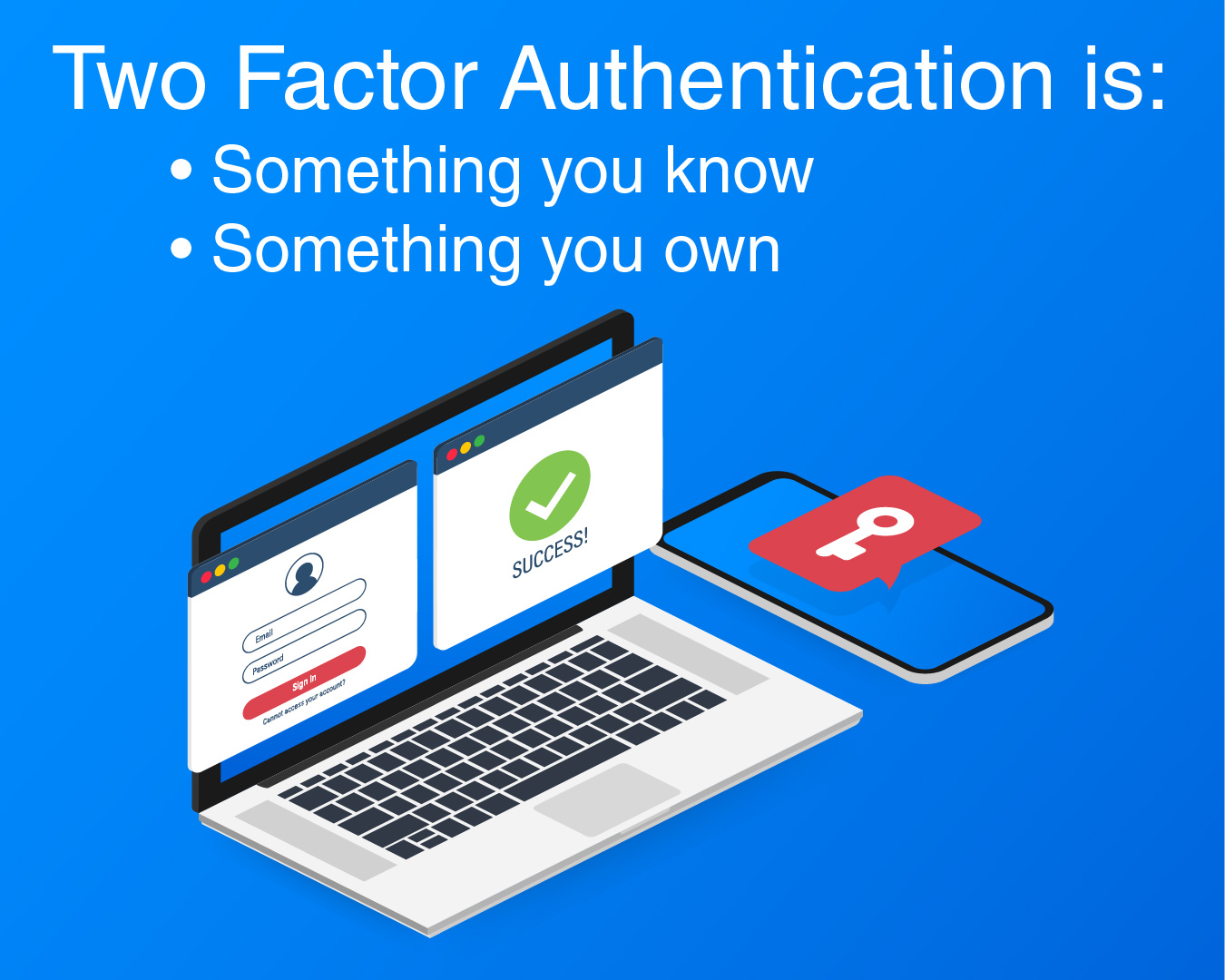More than ever before, when using the Internet we all must be vigilant in securing our online accounts that access sensitive data such as our banking accounts, Social Security numbers, shopping accounts, and accounts that manage cameras and other automation devices we have inside our homes.
Falling prey to a fraudulent phishing* email or having an account breached can potentially expose individuals to cybercrime. Some simple but very effective methods for staying safe include keeping all devices patched and updated, choosing strong passwords that are unique to each account, and implementing two-factor authentication. Also, avoiding clicking links or opening attachments in emails or text messages we did not expect to receive can reduce our likelihood of falling victim to phishing attacks.
Today’s definition of a strong password is one that contains at least 13 characters including uppercase, lowercase, numerals and symbols. Longer complex passwords are now needed because criminals have access to greater computing power that can easily crack shorter, simpler passwords. It is also important not to reuse the same password for different online sites and services. Reused passwords put every account where that password is used at risk if any one of the places where it was used gets breached.
Using a password manager can simplify using multiple strong passwords. Some examples of password managers with free options are LastPass, Keeper, 1Password, and Dashlane. This article from Tom’s Guide provides details for various popular password managers: https://www.tomsguide.com/us/best-password-managers,review-3785.html
Strong passwords combined with two-factor authentication (2FA) provide even stronger security for banking and other sensitive accounts. Two-factor authentication consists of the online site requiring a second form of authentication in addition to your password. An authentication code may be sent to your smartphone via an app or text message, or in some cases a physical key may be used that plugs into your computer or smartphone to complete authentication. Medium.com has a comprehensive guide for beginners on the benefits and types of 2FA, as well as how to use them: https://medium.com/@mshelton/two-factor-authentication-for-beginners-b29b0eec07d7

A recent news story is a particularly good illustration of the risks of single-factor authentication and password reuse. A Mississippi family had installed a voice capable Ring camera in their daughters’ bedroom so the mother, who is a nurse who works nights, could use it to check in and tell her daughters goodnight. One evening upon arriving home, the children encountered a hacker yelling threats and obscenities at them over the camera. Follow-up investigation indicated that the password for the Ring account appeared to have been swiped from another site. Also, two-factor authentication was not being used. Using a strong unique password with two-factor authentication, is a method to avoid unauthorized access to our online accounts. Although it is exciting to get new home automation devices because they are useful, fun, and cool, we need to keep in mind they are an online entry into our homes and our private lives, and that they need to be as carefully secured as our financial accounts.
PVT wants our customers to enjoy all their internet devices and services, and to do so safely.



